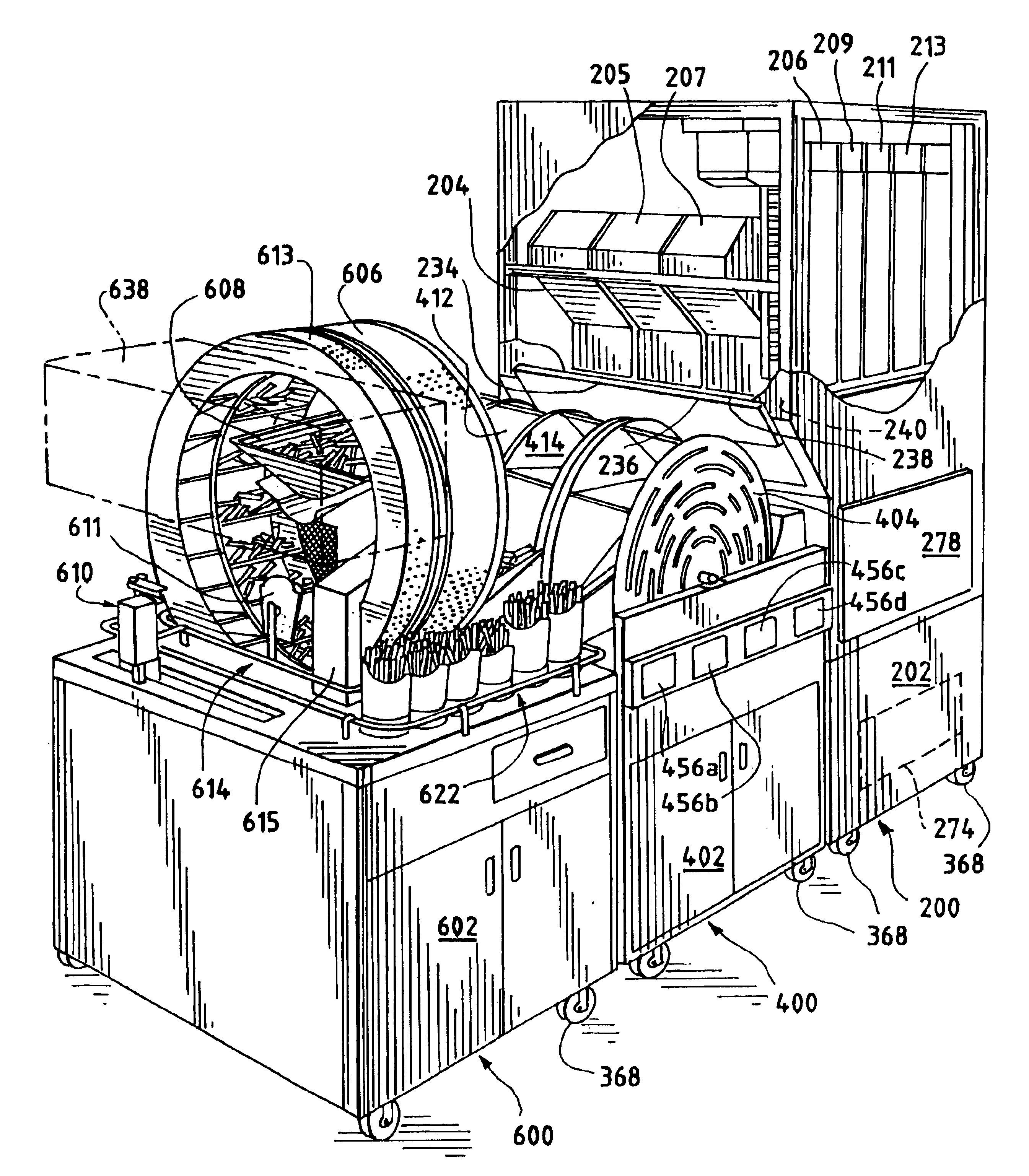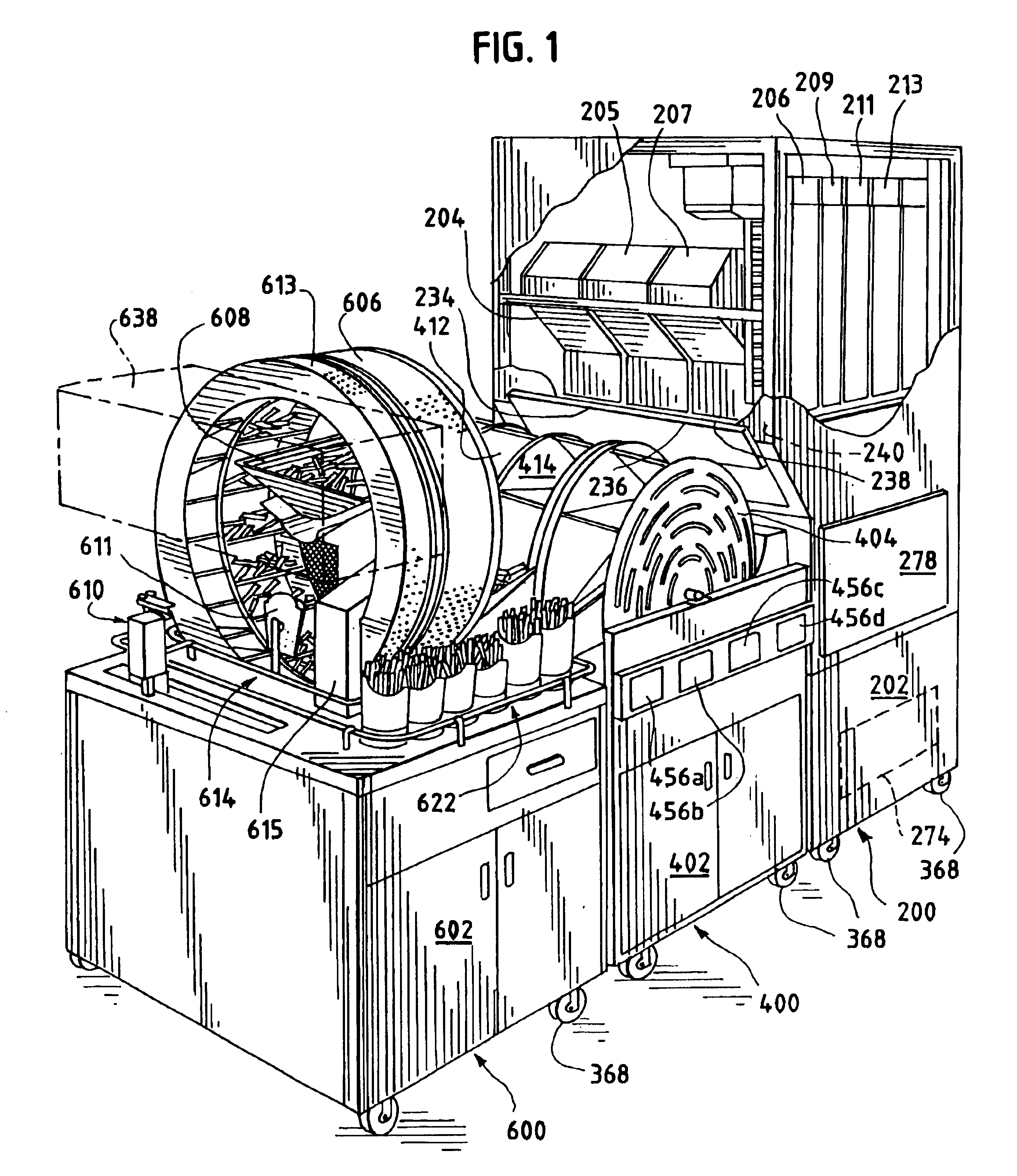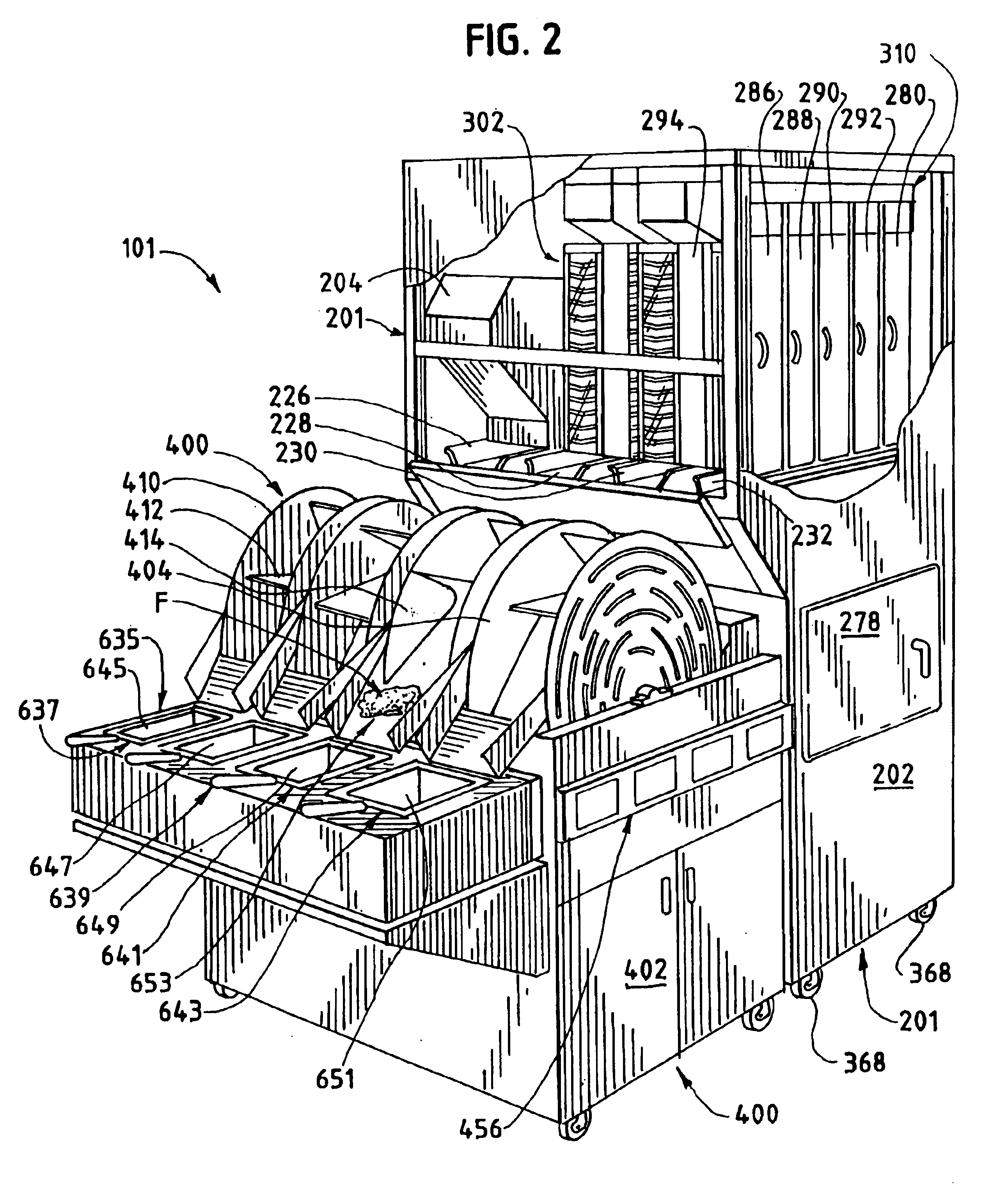In accordance with the present invention, an automated
food processing system and method is provided. The automated food
processing system and method in accordance with the invention allows food to be dispensed, fried and packaged in a suitable container or alternatively dispensed to a food holding area for subsequent
processing by a
human operator.
In accordance with another aspect of the present invention, a device for the automated frying of foods is provided. The device in one embodiment includes a fry vat for containing and heating
cooking oil, at least one circular fry wheel having at least a generally circular perimeter and a plurality of compartments with each compartment having an opening towards the perimeter, the fry wheel mounted for rotational movement relative to the radial axis of the fry wheel which radial axis is disposed above the normal operating level of the frying oil in the fry vat. A drive mechanism is provided for rotating the fry wheel and a
control system is included for causing the drive mechanism to periodically rotate the fry wheel back and forth through a relatively small amount of rotation (such as about 2-10°, for example) to simulate shaking of a fry basket. Such control can be accomplished electronically by devices known to those skilled in the art.
In accordance with another aspect of the invention, a curved baffle is provided that is disposed in the fry vat adjacent the axial periphery of the portion of the fry wheel that is disposed in the
cooking oil for preventing food contained in one or more of the fry wheel compartments from falling out of the compartments.
In accordance with another aspect of the invention, when dispensing food from the chute to the individual portion-sized container, some of the dispensed food is not deposited into the individual portion-sized container and the method further includes collecting the not deposited food. Typically, the not deposited food will be collected in a collection device that returns the not deposited food to the chute for subsequent dispensing. In one embodiment, the collection member is rotatable and can be rotated to deposit the collected food to the chute. This helps to ensure that the not deposited food is subsequently deposited into a container on a first-in, first-out or a generally first-in, first-out basis.
In accordance with another aspect of the foregoing method, the individual portion-sized food container is unerected and the method further includes after the selecting, erecting the selected individual portion-sized food container by the automated device. In one embodiment, the automated device includes a partial vacuum suction device for holding the individual portion-sized food container and the holding includes applying a partial vacuum through a suction device to the food container. The food container can be released by reducing or eliminating the vacuum applied by the suction device to the food container sufficiently to cause the food container to be disengaged from the automated device.
In accordance with another aspect of the invention, the food dispensing member is a rotatable wheel having an open central area and an outer at least generally circular rim. The rotatable wheel has a plurality of open compartments spaced apart about the circular rim that extend inwardly from the circular rim and open interiorly of the circular rim. A baffle may be provided to prevent food contained in the one or more of the open compartments from falling out of the compartments when the wheel is rotated until the compartment is in position over the food dispensing chute. The baffle may be curved to follow the curvature of the inner part of the wheel and may also be perforated. The automated device may further include a rotatable food collecting member that is disposed to collect food dispensed from the
discharge location of the dispensing chute which food is not deposited into a container held in position at the
discharge location. Typically, the collection member will have a
discharge location to discharge collected food. In one embodiment, the
discharge location is the food dispensing chute. The collecting member may be a rotatable food collecting wheel having an open central area and an outer circular rim having a plurality of open compartments spaced apart about the circular rim that extend inwardly from the circular rim and that are open towards the rim interior. The rotatable food dispensing member and the rotatable food collecting member can be rotatable in one direction to discharge food at a
discharge location and into a food dispensing chute and can be rotatable in an opposite direction to discharge the food at a second
discharge location which may be to a waste chute. The discharge to the waste chute feature can be activated, for example, when the food is held in the dispensing device for too long a period of time.
 Login to View More
Login to View More  Login to View More
Login to View More 


